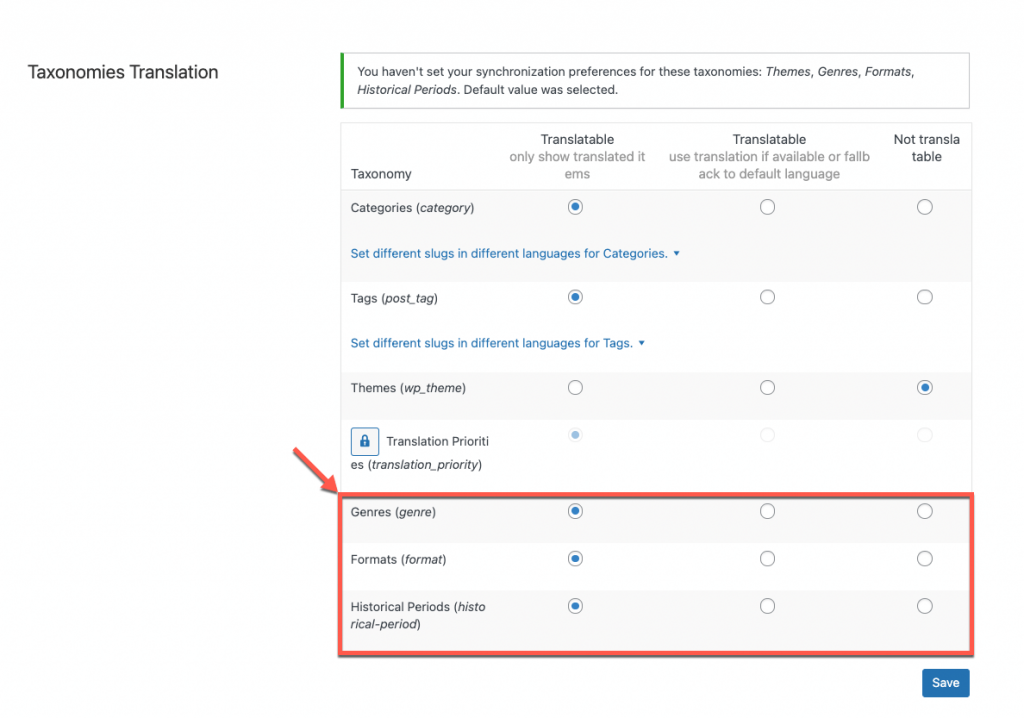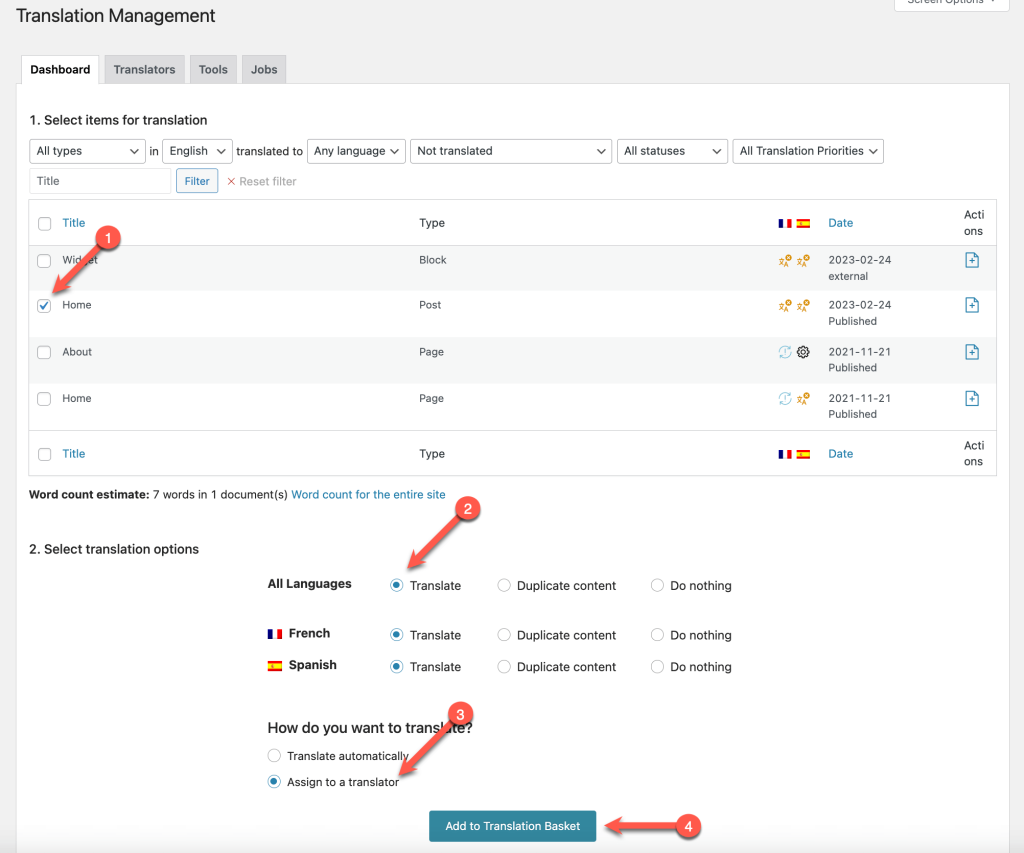Different WordPress sites use different themes, plugins, and page builders. Some plugins store content in unique ways. A test translation will help you make sure that the translation service receives all the texts that it needs to translate and that you receive back the completed translations correctly.
What to Test
You want to make sure that the translation service receives every text that requires translation. Texts on pages may come from:
- The page content
- Custom fields
- Taxonomy (tags, categories, and other custom taxonomy)
- Hard-coded texts from the theme and plugins
- Widgets
- Admin strings
A lot of places…
A simple test translation will help us see that we have selected everything for translation. Because we are translating one simple page, we can quickly run more rounds until we are satisfied.
How to do a Test Translation
First, identify what kind of content you will be sending to translation. If you are translating pages, your test translation should be on a WordPress page. If you are translating products, send a product as the test translation. If you are sending different kinds of items, we recommend doing a test translation for each kind of item that you will translate.
Let’s say you are translating pages, which you built with the WordPress Block (Gutenberg) editor.
Instead of creating a new page, we recommend that you choose a page that you really need to translate and use it for the test. Choose a short page, which uses the same editor as the rest of the pages (same page builder, plugins, etc.).
To make sure all the associated taxonomies and custom fields are also included, go to WPML → Settings and scroll down to the Custom Fields Translation and Taxonomy Translation sections. Set the relevant fields and taxonomies as Translatable.

Send the test page to translation
Go to the WPML → Translation Management page.

Find your test page (use the search filter if needed) and send it to translation.
You will most likely need to to pay for this translation job through the translation service’s website.
Review and Iterate
When the translation completes, view it on the site’s front-end. Check that all texts are translated. If you found texts that are not translated and you are not sure how to translate them, we invite you to open a support ticket and let our supporters help you. It is a lot easier to troubleshoot one test translation than missing texts in dozens of pages.
The following documentation pages explain how to translate texts coming from specific places:
- Taxonomy (tags, categories, and other custom taxonomy)
- Menus
- Hard-coded texts from the theme and plugins
- Widgets
- Custom fields
